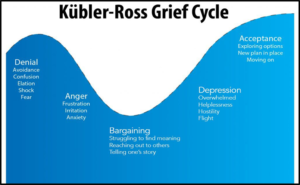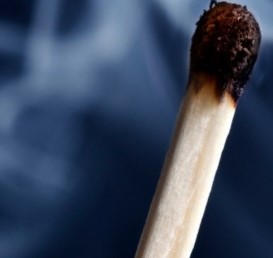
We all lose access to resilience at times. It may come through a significant life event, or it may be the cumulative effect of lots of small knocks or the relentlessness of pressures. Those destabilisers are well recognised but little attention has been paid to another influence on our resilience – shame.
Shame is one of the most primitive and universal of emotions. It is the intense painful feeling or experience of feeling we are flawed and therefore unworthy of acceptance or belonging. It is when we use words like unacceptable, diminished, small, embarassing or rejected to describe ourselves. It is separate from guilt which relates that how we have behaved. We can be guilty because we lied in order not to be found out, we failed to do something we know we should have done or were mean towards someone who was vulnerable. Shame does not have links with how we have behaved, it is linked to how we feel about ourselves. We can feel shame about our age, our appearance, our weight, our accent, our education.
As a child I felt shame about being in a single parent family when everyone around me had 2 parents. I felt shame when I went to university and found that the norm for other students was to have had dinner parties at home, when an invitation for a cup of tea was all I knew. What I did not know was that much of the shame we put on ourselves is based on cultural expectations, or our perception of cultural expectations. I sensed that I should know how to eat a Jerusalem artichoke when I had never seen one in my life. I believed that if I spoke with my Liverpudlian accent I would be thought stupid, and the impact of those feelings gnawed at my fragile confidence. Where I could have judged those who made me feel small, I judged myself and felt shame.
Brene Brown whose writings on vulnerability are well known, also did early work in her career on shame and concluded that there are 3 main outcomes of shame:
- A sense of being trapped. The feeling of there being expectations on us that we cannot meet. The expectation to be:
Successful in career
In a relationship
A good parent
Smart
Slim
Ambitious
- A feeling of powerlessness. It is sometimes difficult to even recognise the feelings of self judgement or fear as being those of shame. It is also difficult to believe that you can do anything that would change the feelings. Power is the ability to produce an effect. Shame can feel like a hidden secret over which we have no power to make a change.
- A feeling of isolation. A feeling that because of the cause of your shame you are disconnected from others. They do not know your shame is caused by eating too much, or too little, feeling different because of your appearance, class origins, income or education but it creates a barrier between you and those you perceive to be shamefree.
The question Brown explored was what is it that causes these feelings of shame, which remain a taboo subject of conversation, and yet affect how we show up to others, and eat away at our resilience.
Her answer is that it is a spider’s web of cultural expectations based on what you feel you should be and how you feel you should be.
What you should be is influenced by:
- The messages that the media and particularly social media promote as to what is acceptable (and then the shame when you do not match up).
- The overt and covert messages that families give as to what they want for you (and the shame if you cannot deliver on their expectations).
- The images in films and advertisement of what masculinity and femininity are (and the shame when they do not match with your sense of self)
How you should be is also influenced by:
- Your friends
- Colleagues at work
- Books
- Music
- TV programmes
- Your own messages to yourself
Fail to meet up to what others want you to be or what you think you should be and shame is there to show you up.
When we cannot live up to what we believe is being asked of us then shame drives us to behave in ways which we believe will meet those expectations and reduce the feelings. We try and become like the ‘them’ who we have allowed to make us feel shameful. We hide parts of ourselves which we feel are not acceptable.
But the answer is not to build shame resilience by doing what we feel is being asked of us – whether that is to lose weight, have a successful career, find a partner, or to deny who we really are, but by decreasing the feelings of being trapped, being powerless and being isolated.
Key to this shift Brown discovered in her research was replacing shame with empathy. Rather than hiding one’s feelings about oneself, sharing them with someone you can trust so that:
- You see yourself as another person sees you (which is often very different from how you see yourself).
- Feel listened to without being judged.
- Feel understood by another person (and perhaps learn they have similar feelings).
- Having that person show that they understand your feelings.
That evidence is that empathy is a powerful catalyst in reducing the sense of isolation, of being trapped and of being powerless. The outcome of that shift is an increase in resilience.
If you cannot find that person, then offer some kindness to yourself. Be your own friend and ask yourself what would you say to someone who said to you, ‘I feel shame because I am. . . overweight, jobless, have no partner, am from a working class family, don’t have a university education etc. And accept the loving kindness you would give to another.
Shame is powerful and toxic because it is hidden. It has to be kept out of site because others would think badly of us, if they knew how we feel, and yet whilst it is hidden it does not disappear. What Brown’s work shows is that it is being able to talk to someone that shame shrinks and resilience grows. And, if you cannot find that person then befriend yourself.
Reference: Brene Brown, 2006, Shame Resilience Theory, The Journal of Contemporary Social Services.





 Remember Brexit? A year ago I wrote a blog linking the uncertainty of Brexit with the need to be resilient. Where once Brexit dominated our media, now it does not merit a newspaper column inch. Its’ place has been taken by a word unknown to us all until 2020 – COVID 19. In 2019 I wrote about VUCA: a term then increasingly familiar in business contexts, because it captured the sense of Volatility, Uncertainty, Complexity and Ambiguity that many people felt in their workplace as Brexit loomed. Little did we know that a year on, we would be living with VUCA on steroids.
Remember Brexit? A year ago I wrote a blog linking the uncertainty of Brexit with the need to be resilient. Where once Brexit dominated our media, now it does not merit a newspaper column inch. Its’ place has been taken by a word unknown to us all until 2020 – COVID 19. In 2019 I wrote about VUCA: a term then increasingly familiar in business contexts, because it captured the sense of Volatility, Uncertainty, Complexity and Ambiguity that many people felt in their workplace as Brexit loomed. Little did we know that a year on, we would be living with VUCA on steroids.






